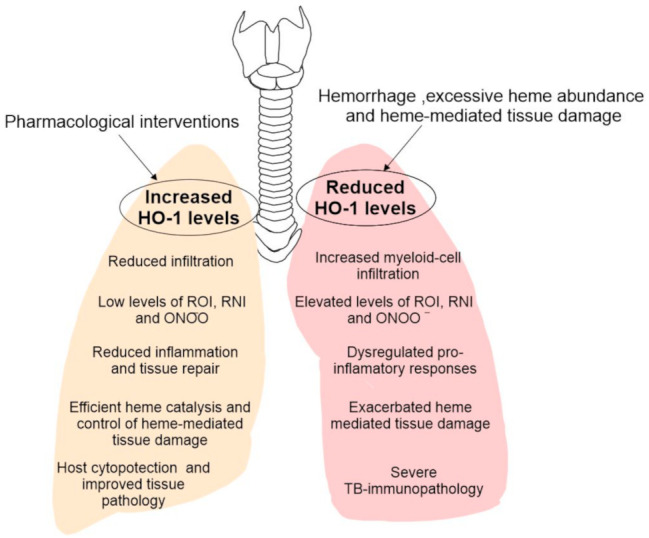Figure 3.

Model for the impact of HO-1 levels in the outcome of TB immunopathology. During late stages of TB disease, there is a significant hemorrhage and heme release in the surroundings of disease which causes reduction in HO-1 levels and its enzymatic activity. Heme, a very potent oxidant molecule, causes significant tissue damage. This is accompanied by uncontrolled infiltration of myeloid cells and their pro-inflammatory functions, causing significantly elevated levels of ROI, RNI and ONOO− and exaggerate the TB immunopathology. Conversely, using HO-1 as HDT target and inducing its levels, especially during late stages of TB could provide host cytoprotection by improving heme catalysis, decreasing immune cell infiltration and supporting anti-inflammation and tissue repair.
